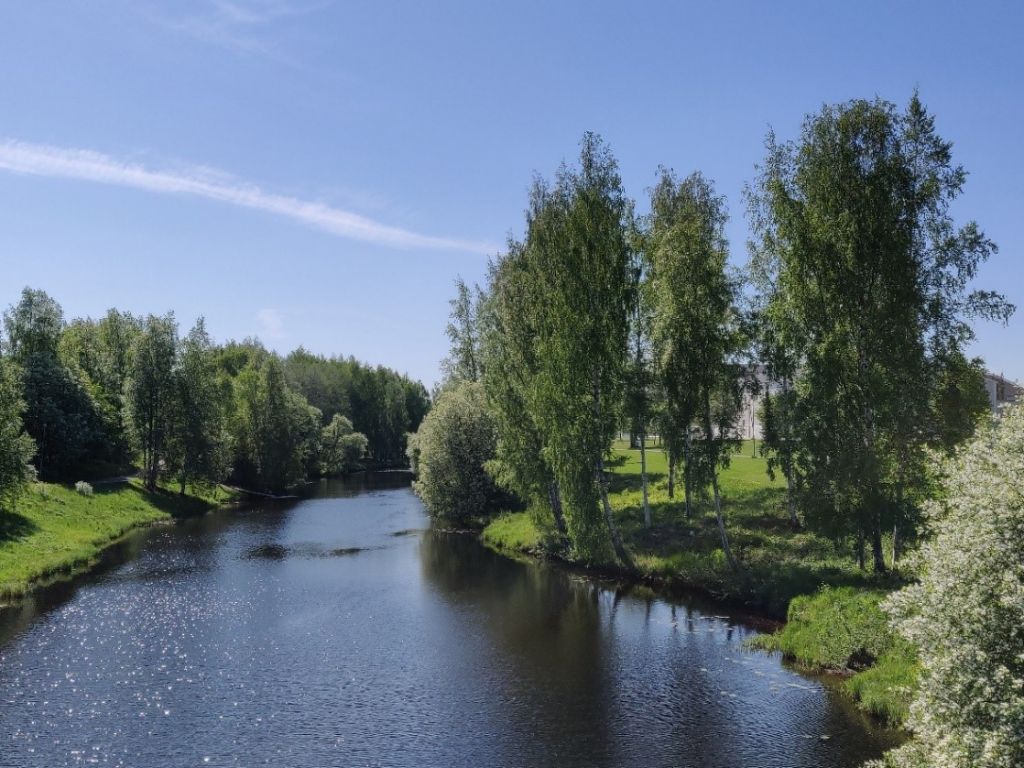Well-being from Nature – cooperation through international project
Travelers looking for well-being – is it for offer?
Travelers are requesting more and more well-being services and welfare is a growing branch of tourism. The existing Green Care –actors do already have services for locals, and that forms a potential for domestic and international tourists through welfare tourism. However, more knowledge and knowhow is needed for executing the change from mainly domestic clientele to domestic and international. There is also room for new actors and services in this area. Already existing actors and potential new ones benefit from support, benchmarking and international connections.
Answering these needs is the goal in a Well-being from Nature –project. Project is funded by Leader -groups and in Finland, executed by Seinäjoki University of Applied Sciences (SeAMK) in South Ostrobothnia. In addition, there are two international Leader -groups as partners: Gozo Action Group from Malta and Inishowen Development Partnership from Donegal, Ireland.
Green Care and nature induced well-being
Green Care –services utilize surrounding nature for maintaining and promoting the welfare of individuals in goal-oriented, professional and responsible manner (Finnish Institute for Health and Welfare; MTT VoiMaa –project; GreenCare Finland ry). In Finland, Green Green Care services can be divided into ‘nurture by nature’ and ‘strength of nature’ services. (MTT VoiMaa –project; GreenCare Finland ry). ‘Nurture by nature’ functions require a degree in the field of health care and social work, unlike ‘strength of nature’ functions (Matilainen et al. 2018). The basic elements of Green Care are nature, action and community. Effects on well-being are achieved by combining and emphasizing these elements for example through nature’s revitalizing aspects, experiences and participation. (MTT VoiMaa –project; GreenCare Finland ry.)
The relaxing effect of the nature and natural environment, with low levels of air pollution and noise, explain the positive impacts on health and well-being. Spending time in natural outdoors environments has noteworthy benefits, and being in forests and other green areas have several positive impacts on individuals and communities physical, mental, emotional and spiritual well-being. Nature and green spaces – which include for example forests, parks in the cities, open countryside and gardens – have positive effects on mental health, provide space for forms of social contact, can reduce crime, foster psychological well-being, reduce stress, boost immunity, enhance productivity and promote healing. Overall, according to the ever-growing number of studies, we feel better if we spend time outdoors. (Humberstone 2015.)
Nature offers also an alternative to the phenomenon of urbanization, which has accelerated especially during this millennium. WHO (2010, n.a.) has stated several negative effects urbanization has: risks “related to water, environment, violence and injury, non-communicable diseases (cardiovascular diseases, cancers, diabetes and chronic respiratory diseases), unhealthy diets and physical inactivity, harmful use of alcohol as well as the risks associated with disease outbreaks”.

The action aspect of Green Care connects individuals with their environment and offers a chance for learning and experience. Interesting aspect with the action is that it can be defined through action in, with or for nature. The community aspect enables participation and interaction. The feeling of participation can be achieved through interaction with people, animals, nature or a certain calming place. (MTT VoiMaa –project; GreenCare Finland ry.)
Welfare tourism
According to Little (2012) there is a broad acknowledgement of the leisure and tourism industry and of the creation of a market for therapeutic holidays of varying forms. Welfare tourism is the type of tourism where the purpose is to promote ones well-being and to seek experiences of delight and luxury, in this case in nature. In Well-being form Nature -project, welfare tourism is also connected to the concept of sustainable tourism, which is defined as “tourism that takes full account of its current and future economic, social and environmental impacts, addressing the needs of visitors, the industry, the environment and host communities. It also provides more meaningful connections with local people, and a greater understanding of local cultural, social and environmental issues.” (UNWTO, 2005). Hence, the project also seeks to take into account the local landscape and environment, as well as wider rural economy and quality of life.
Often it is difficult to see what is special in one’s own living environment. During the project, there is possibility to travel to partner countries, which will also send representatives to Finland. This gives Finnish project participants possibilities to benchmark ideas from Malta and Ireland. Mutually, when the Maltese and Irish participants come to Finland, there is a possibility to have a conversation about the things they find interesting and special in Finland, and what brings positive feelings for them. In the future, these experiences can be used in developing activities and services in the Green Care -context.
Authors
Tanja Hautala
SeAMK School of health care and social work
Salla Kettunen
SeAMK School of business and culture
References
Finnish Institute for Health and Welfare. In Finnish: https://thl.fi/fi/tutkimus-ja-kehittaminen/tutkimukset-ja-hankkeet/tyohon-kuntouttava-green-care-etela-suomessa/mita-green-care-on
Humberstone, B. (2015) Embodiment, Nature and Wellbeing, in Experiencing the Outdoors. Brill. 61-72.
Little, J. (2012) Transformational Tourism, Nature and Wellbeing: New Perspectives on Fitness and the Body. Sociologia Ruralis. 2012, 257- 271. In https://onlinelibrary.wiley.com/doi/epdf/10.1111/j.1467-9523.2012.00566.x
Matilainen A., Aalto A., Jyllilä S., Haanpää P., Matikainen L., & Aho M., (2018). Etelä-Pohjanmaan Green Care -strategian 2015 – 2020 päivitys., In: Seinäjoen ammattikorkeakoulun julkaisusarja B. Raportteja ja selvityksiä 139, Seinäjoen ammattikorkeakoulu. URN: ISBN:978-952-7109-96-0
MTT VoiMaa –project. In www.mtt.fi/greencare
GreenCare Finland ry. In www.gcfinland.fi
WHO (2010). Bulletin of the World Health Organization (BLT). http://www.who.int/bulletin/volumes/88/4/10-010410/en/
